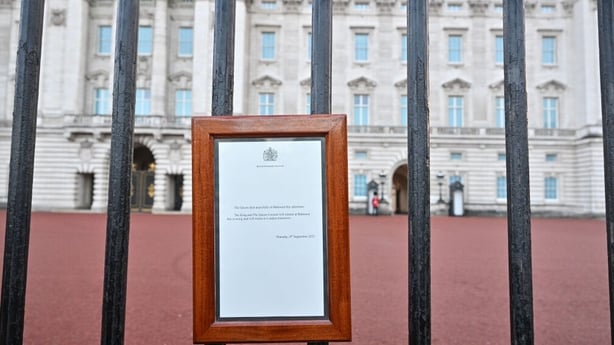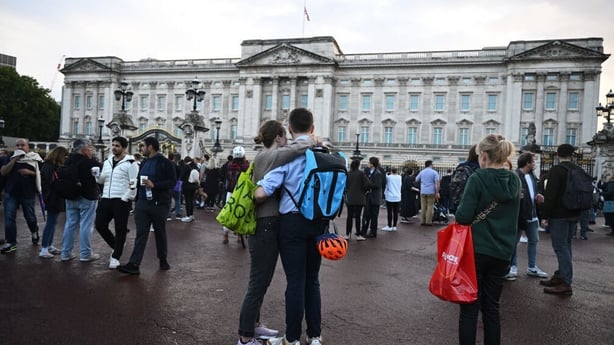Britain's Queen Elizabeth II has died at the age of 96.
She was the longest serving British monarch of all time, recently celebrating 70 years on the throne.
Buckingham Palace confirmed the queen's death at her residence in Balmoral in a statement yesterday which read: "The Queen died peacefully at Balmoral this afternoon.
"The King and The Queen Consort will remain at Balmoral this evening and will return to London tomorrow."
Queen Elizabeth had been placed under medical supervision with doctors concerned for her health, just days after carrying out meetings to transfer power to the new British Prime Minister.
News of her death has triggered an official period of mourning in the UK.
The Prince of Wales has become king, having acceded to the throne immediately on the death of his mother.
Charles - the nation's longest-serving heir apparent, having been so since he was three years old - is now fulfilling his royal destiny and reigning as monarch.
In a statement, King Charles III said: "The death of my beloved Mother, Her Majesty the Queen, is a moment of the greatest sadness for me and all members of my family.
"We mourn profoundly the passing of a cherished Sovereign and a much-loved mother. I know her loss will be deeply felt throughout the country, the realms and the Commonwealth and by countless people around the world.
"During this period of mourning and change, my family and I will be comforted and sustained by our knowledge of the respect and deep affection in which the Queen was so widely held."


The flag at Buckingham Palace was lowered to half mast at 6.30pm.
People among the crowd gathered outside the gates began crying and taking pictures as a single helicopter circled the skies above.
A group of armed police assembled with palace staff in the grounds.
Floral tributes are being laid outside Windsor Castle to mourn the death of the queen.
The crowds outside were so big that staff members returning to the castle struggled to drive through the main entrance.
Thousands gathered late into the night at Buckingham Palace to express their sorrow, many saying they had come to say thank you and to mark what all accept is the end of an era.
Live: Updates as they happen
Obituary: Queen Elizabeth's remarkable 70-year reign
Queen Elizabeth II - an extraordinary life in pictures
'A Uachtaráin agus a chairde' - Elizabeth and Ireland
Shadows and Shelter - The State visit of President Michael D Higgins to the UK
In an address from Downing Street, Liz Truss announced Charles's new title.
She said: "Today the crown passes, as it has done for more than 1,000 years, to our new monarch, to our new head of state, His Majesty King Charles III."
The queen's coffin is set to lie in state to allow the public to pay their last respects.
Lying in state is usually reserved for sovereigns, current or past queen consorts, and sometimes former prime ministers.
During the formal occasion, the closed coffin is placed on view in the vast, medieval Westminster Hall in the Palace of Westminster.
The historic spectacle is expected to attract hundreds of thousands of people.
The queen's death in Scotland means there could possibly be a second mini lying in state, most likely in St Giles' Cathedral in Edinburgh, which would allow the public to honour the monarch.
Contingency plans put in place in case the queen died during the pandemic are believed to have included ticketing of the main lying in state, possibly in timed slots - an option which could still be employed.
The Duke of Edinburgh did not lie in state, which was in accordance with his wishes, but, at this point in the Covid-19 crisis, such mass gatherings were also against the law.
In the days leading up to the funeral, members of the public will file slowly past to pay their respects in sombre silence.
For a royal lying in state, the coffin is draped in a royal flag, usually a personal standard, and rests on a catafalque - a raised platform covered with a purple cloth, flanked by a military guard around the clock.
A priceless crown and other regalia are traditionally placed on top of a sovereign's coffin.
Each corner of the platform is watched 24 hours a day by units from the Sovereign's Bodyguard, Foot Guards or the Household Cavalry Mounted Regiment.
The last person to lie in state in the UK was the Queen Mother in 2002.

